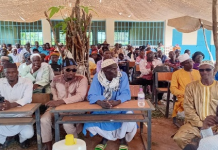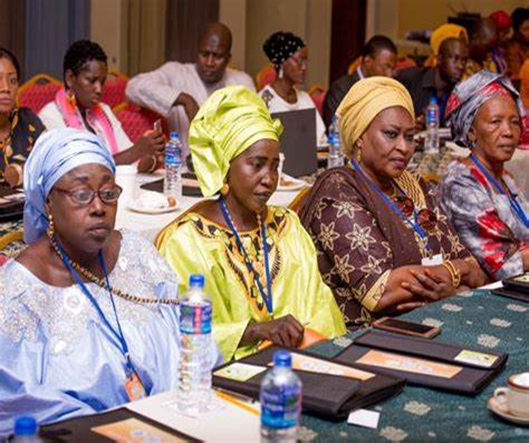By Amadou Manjang
The Gambia’s gender parity scores have increased, World Economic Forum’s Global Gender Gap 2024 Report discovered.
However, an analysis of the data shows gender parity in education and political participation is moving slowly while health remains stagnant.
In this year’s Global Gender Gap Index, the Gambia scores 110 position out of 146. In 2023, the country scored 119 positions.
For the sub-regional ranking, The Gambia ranked 24 out of 35 economies in the index report.
The Global Gender Gap Index was launched in 2006. It is the longest-standing index tracking the progress of numerous economies’ efforts toward closing these gaps over time.
Annually, it benchmarks the current state and evolution of gender parity across four key dimensions including Economic Participation and Opportunity, Educational Attainment, Health and Survival, and Political Empowerment.
The Gambia scores 56 for her Economic Participation and Opportunity dimension, Educational Attainment dimension (117), Health and Survival dimension (83), and Political Empowerment dimension (130) respectively.
In the 2023 Global Index rank, Gambia scores 106 for her Economic Participation and Opportunity dimension, Educational Attainment dimension (114), Health and Survival dimension (83), and Political Empowerment dimension (132) respectively.
The Gambia has poor gender parity in educational attainment and political empowerment compared to other dimensions despite a slight improvement in all dimensions.
However, the Report placed the Gambia among countries with good scores, with Ecuador scoring (+5.1%), Sierra Leone (+4% ), Algeria (+3.9% ), Guatemala (+3.8%), and The Gambia (+2.8%).
The economies whose scores declined the most are Rwanda (-3.8%), Bangladesh (-3.3%), Lao PDR (-3.3%), Bhutan (-3.1%) and Jamaica (-2.2 %).
According to the report, the global gender gap score in 2024 for all 146 countries included in this edition stands at 68.5%.
‘Compared against the constant sample of 143 countries included in last year’s edition, the global gender gap has been closed by a further +.1 percentage point, from 68.5% to 68.6%. When considering the 101 countries covered continuously from 2006 to 2024, the gap has also improved + .1 points and reached 68.6%,’ the report added.
The report highlighted that there is a lack of meaningful, widespread change since the last edition effectively slowed down the rate of progress to attain parity.
‘Based on current data, it will take 134 years to reach full parity – roughly five generations beyond the 2030 Sustainable Development Goal (SDG) target,’ it stated.
The report finds no country has achieved full gender parity but ‘97% of the economies have closed more than 60% of their gap, compared to 85% in 2006.’
The regional result of the report stated that Sub-Saharan Africa has a gender parity score of 68.4%, adding that the region has advanced by an overall +5.6 percentage points since 2006. While 21 out of 35 economies are in the top 100, Namibia stands out as a top 10 performer.
It further stated that over half of the countries in the region have closed over 70% of their gender gap; however, the top and bottom ranks are divided by 22.8 percentage points.
‘Economic Participation and Opportunity stands at 68.1%, with progress in labour-force participation and positive results in technical and professional roles,’ it said.
‘Ranking last in Educational Attainment, Sub-Saharan Africa has the widest gap to close, with a score of 88.9%. Health and Survival stands at 97.1%, while Political Empowerment shows improvement at 22.6%, with notable strides in ministerial and parliamentary representation, particularly in Mozambique and South Africa.’


















